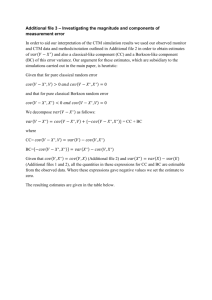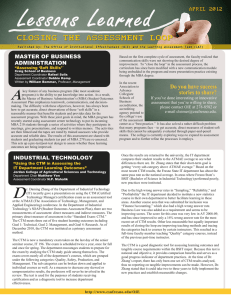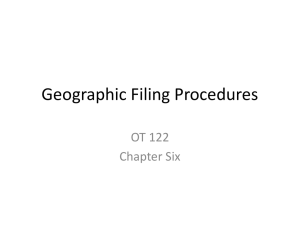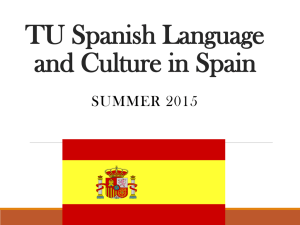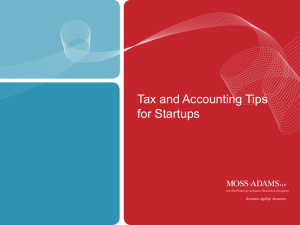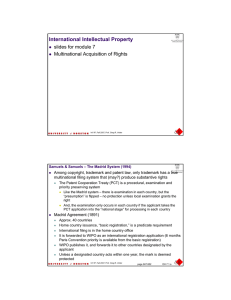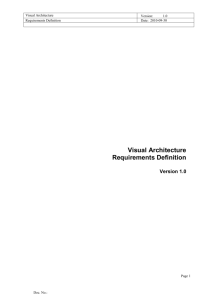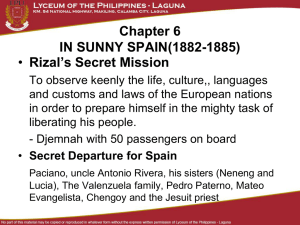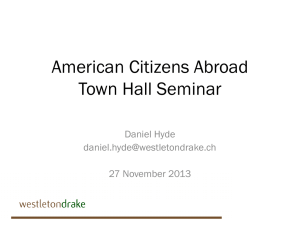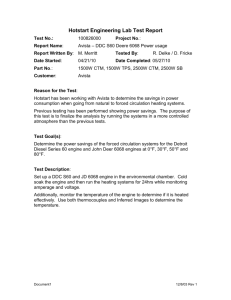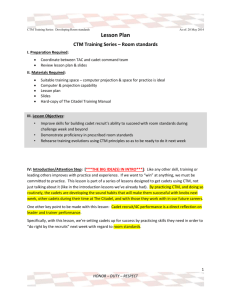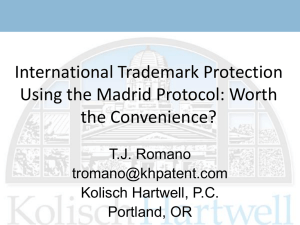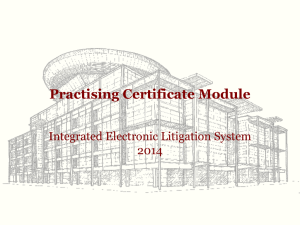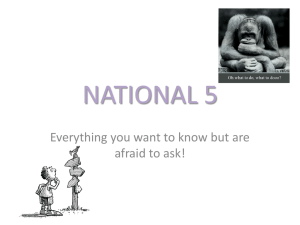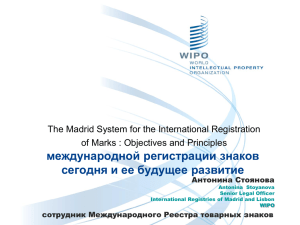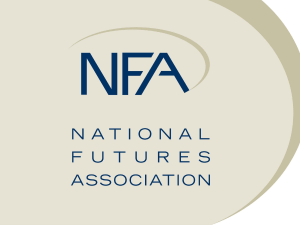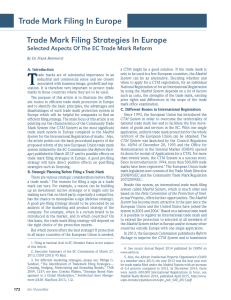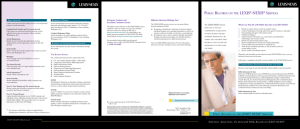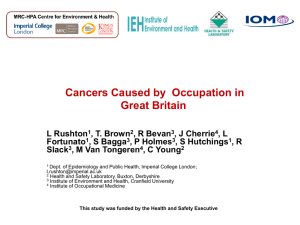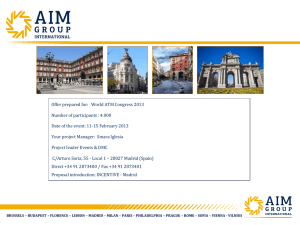Paris Convention - Gavin Law Offices, PLC
advertisement
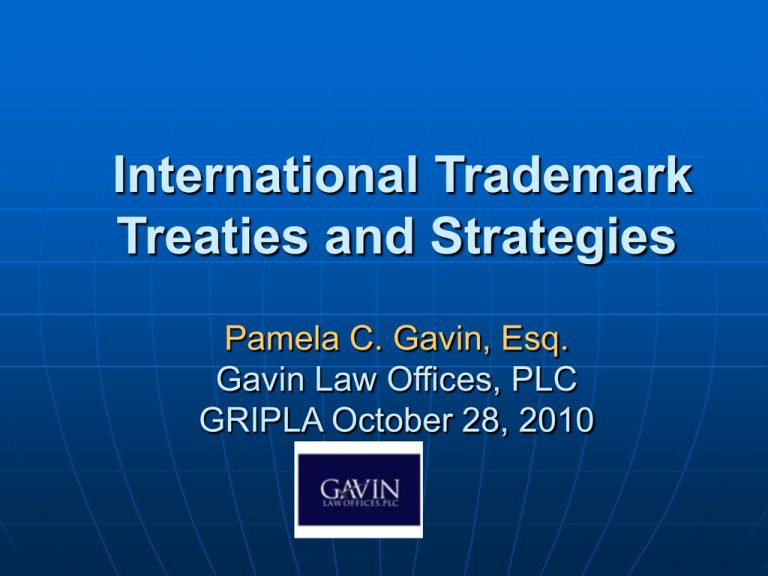
International Trademark Treaties and Strategies Pamela C. Gavin, Esq. Gavin Law Offices, PLC GRIPLA October 28, 2010 Paris Convention National Filings Madrid Protocol Community Trademarks Paris Convention National Treatment Convention Priority Protects well-known marks, trade names, and claims deriving from unfair competition Registrations are independent from each other Currently 173 signatories Practice Pointers Within six months of filing U.S. marks, recommend to clients to file foreign applications in Paris Convention (and certain other) countries (e.g., China) Can include goods/services in original application, as well as other, non-priority goods/services National Filings – Know Your Country! Rules differ from nation to nation • First to file vs. first to register? Scope of searches and claims • Identical/similar? Class headings or detailed? Assistance of local counsel helpful Most expensive option May be more vigorously examined than Madrid applications which face strict exam time deadlines May also be more “enforceable” before local courts (e.g., BOIP) German National Filing Illustration • Filing for Class Headings allowed • Examination covers only inherent registrability (not third party rights) • Marks are opposed after registration issues • Bases for opposition: Registered marks; nonregistered marks; business signs; company names (e.g., Daimler even though not used on cars in Germany but is used in trade); titles of works (books, software), well-known trademarks Implications– Practice Pointers Preclearance implications Properly advising client If claim class headings, how to show “genuine use” to keep registration alive? Rely on advice of local counsel Madrid Protocol Strategic Insights Allows for trademark owner to obtain protection in any or all member states selectively with simplified process National examinations are required; if pass, country is included in IR Madrid Protocol Challenges and Practice Pointers Requires showing of “use” in each country Applicant for an IR (bundle of national rights) must be a national of, or domiciled in a member country. In an application filed under the Madrid Protocol, the description of goods and services must be no broader than those in the home application regardless of whether priority is claimed. Action for infringement is taken through the courts of the country concerned and generally any injunction extends to that country only. Madrid Protocol: Challenges and Practice Pointers To minimize risk of “central attack” base filings on U.S. registrations over five years old Cost savings from filing may be negated by use of local agents if problems arise Filings based on U.S. registrations may have more narrow claim for goods/services than extensions based on other national registrations or CTMs. Community Trademarks CTM Key Facts Centrally administered by Office for Harmonization in the International Market (OHIM) Single filing covers 27 EU nations & 500 million consumers OHIM reduced app/reg fees 40% in 2009 (2075 Euros 900 Euros) Unitary right enforceable across EU CTM Advantages Class headings allowed Use required in only one member Increasing # member states; fees being reduced Overall filing costs & admin fees low considering geographic scope CTM Disadvantages CTM may not be used to oppose a national registration if CTM is used only in a single country (BOIP-on appeal) Objection in one state can defeat entire application; conversion into national applications does not refund CTM filing fees & Nat'l fees apply Increasing members => increased risk of objections? Key Facts (Cont’d) If CTM in infringed, Pan-EU injunction possible Oppositions can be based on prior CTMs, national marks or International (Madrid) trademarks with effect in one of the member states Hypotheticals Company A is well known in U.S. and owns many registrations. Upon researching EU expansion, search results reveal identical mark registered in several nations in Company A’s field. How can Company A expand into EU? Company B faces an unknown potentially “blocking” competitor in many countries. Company B predates competitor in a large nation and via watching services notices the competition seeks registrations there. What to do? Hypotheticals (Cont’d) Company C would like to expand internationally selectively. Which treaty best supports? THE END QUESTIONS? THANK YOU!
